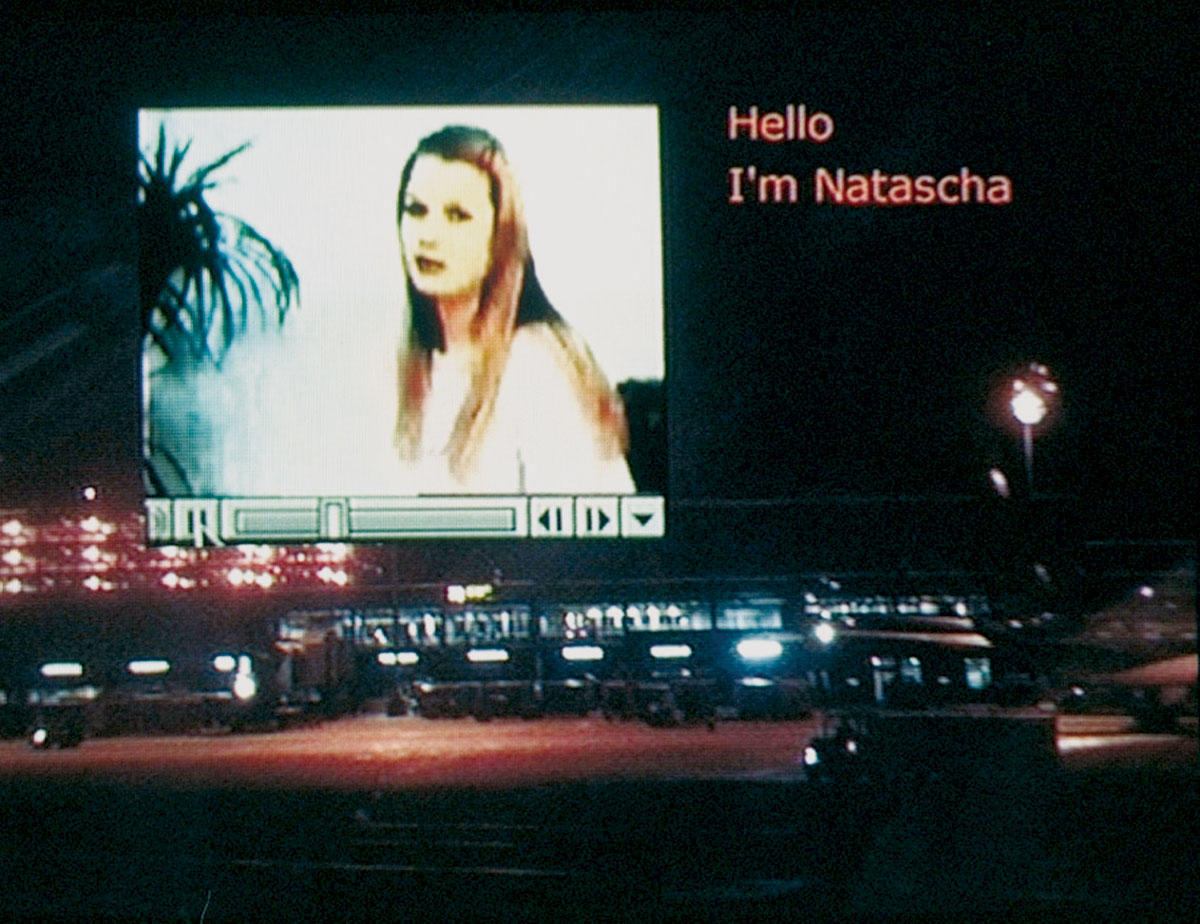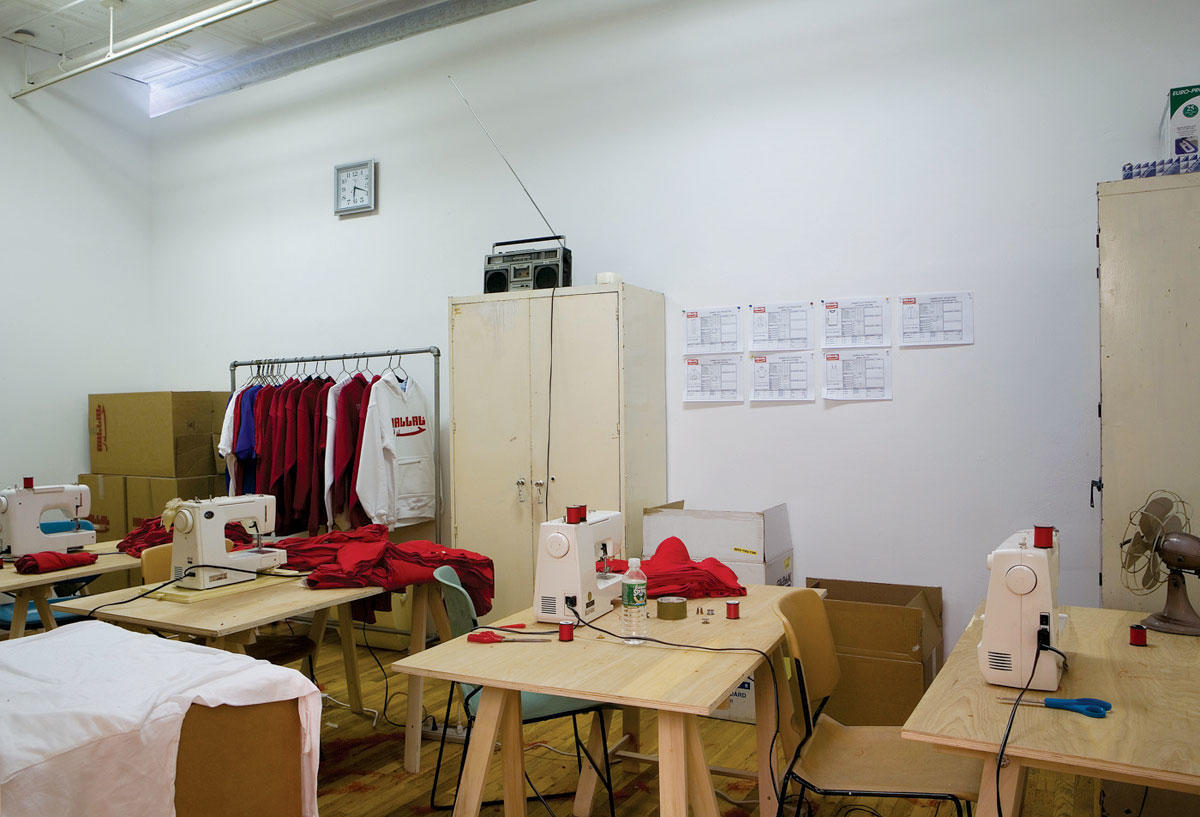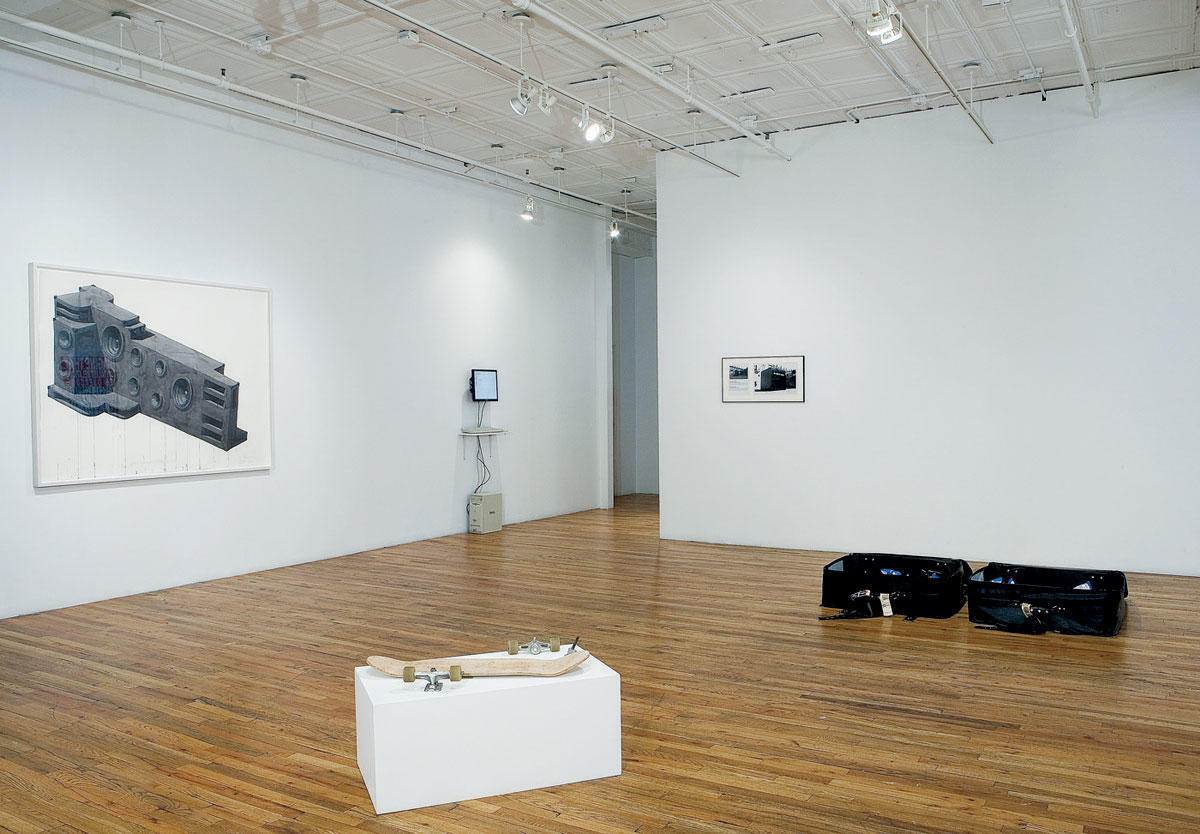
New York
New Economy
Artists Space
June 15–July 28, 2007
These days, it’s considered almost socialist even to utter the word “capitalism”—to assert that the system exists as something with edges and boundaries. What was once a tension between ideologies has now become a question of how and to what degree one chooses to interact with the world at all.
In “New Economy,” which showed recently at Artists Space, curator João Ribas set out to assess the nature of artistic practice in a so-called post-Fordist economy through works by nineteen artists that attempted to trace the contours of capitalism’s most recent, “frictionless” stage. Post-Fordism connotes a renewed capitalism in full bloom, finally free to finish the work begun by the assembly line, with newer forms, better tradeoffs, lighter alloys, and flexible work schedules to inspire widespread creativity and entrepreneurship. Ribas hoped to ask questions regarding the artist’s role in this paradigm — whether artistic practice can function as a localized form of resistance to other dematerialized forms of production and circulation, whether artists maintain a degree of political agency given their high visibility and/or marginal status. Works in the show ranged from those that engaged an economic system directly (exploring and exposing its structure) to those that functioned autonomously under its radar.
Milica Tomic’s Reading Capital merged the two approaches, finding an eerie negative space somewhere in the doldrums between ideology and autonomy. The ten-minute video loop shows various Texans reading excerpts from Marx’s Capital, each in a setting chosen by the subject. Their vacant stares, mechanical recitations, and bourgeois backdrops gave the impression of a bad soap opera. Reading Capital testified to the death of ideology by parading its corpse, and the droning voices of its subjects suggested that it may have taken autonomy with it.
Kader Attia’s Hallal Sweatshop was one of these greedy “human installation” pieces: Three women sat in a room working at their sewing machines as if in a real sweatshop. Attia the artist impersonated the class enemy: the factory boss with harebrained schemes whose mundane details are left to the workers to figure out. He played the part but failed to create the resoundingly exploitative artwork that Santiago Sierra managed to with an inverse economy of means.

The documentation of Sierra’s piece played in a small frame on the wall. In 586 Horas de Trabajo, workers spent 586 combined hours erecting a four-meter black concrete cube. The enormous cube served the sole function of honoring the amount of time spent on its construction, with the words “586 Horas de Trabajo” written in large letters across one side. As a big black box, and as a monument to its own creation, the piece appeared to be a wry comment on minimalism, which to some extent it was. But through a kind of loophole — by translating a formal concern expressed in material (the closed system) into a social one expressed in labor — he actually reached back and drew from minimalism’s own primordial drive. If 586 Horas de Trabajo played a joke on minimalism, the joke was only directed at its metaphysical aspirations. Beyond that, Sierra’s work passionately reaffirmed minimalism’s materialist core.
Other works in the show featured more ambiguous questions concerning labor and the distinction between the mass-produced object and the artisanal gesture. Daniel Dewar and Grégory Gicquel’s Handcrafted BMX Frames and their Handmade Deck, Truck and Wheels are both lovingly handcrafted versions of mass-produced objects. But bike frames and skateboards, however mass-produced, are most often assembled by human hands. Daniel Dewar and Grégory Gicquel’s slyly redundant gesture suggested the gap between the artisan and the assembly line to be an emotional distinction, not necessarily a material one.
Rirkrit Tiravanija’s elegant Untitled 1991 (Artificial Flavor) featured two suitcases lying front and center on the floor of the exhibition space, flipped open as if at an airport security checkpoint to expose the contents within: dozens of small bags of potato chips, more useless than the suitcases that carried them. It was a strangely potent image of the new economy, in which inverted laws of supply and demand allow improvised peer-to-peer relationships built around the most ridiculous possible common interests. If “New Economy” asked questions about the artist’s role in the changing economy, Tiravanija’s work stood as perhaps the show’s the most triumphal response, offering little in terms of usable content while still shimmering with an undeniable, enigmatic presence.

The center of the show for me, though, was Harun Farocki’s Workers Leaving the Factory, a meditation on the Lumière brothers’ Workers Leaving the Lumière Factory (made in 1895, it’s considered to be the first film ever made). Farocki took the subject and title of the Lumière brothers’ forty-five-second film literally, and in his own expansion of the original, he gathered as many variations on film as possible of workers leaving factories. At one point, the voiceover described the explosion of joyous energy leaving the factory at the end of the day “as if [the workers were] impelled by force… as if something were drawing them away.” In the context of the exhibition, I couldn’t help but imagine the latent magnetic pull away from the factory as the embryo of a post-Fordian economy, and the escape into air and possibility as the only natural reaction to the droning repetition of the assembly line.
As might be expected, a number of works in “New Economy” did suffer from being flat parodies of either antiquated ideological declarations or the banal operations of the internet economy. Heath Bunting’s Skint The Internet Beggar was just that—a kind of e-hobo taking pocket change via credit card on a website. Oliver Ressler’s vinyl banner Alternative Economies, Alternative Societies, invited viewers to IMAGINE THAT CAPITALIST RELATIONS ARE OVERCOME BY LOCAL ECONOMIC FEDERATIONS OF GRASS-ROOTS GROUPS THAT PRODUCE ACCORDING TO REGIONAL DEMAND, while Carolina Caycedo’s Day to Day documented a series of barter transactions. Though these works strove to emphasize an autonomous position for the artist, they also ran the risk of hiding from the true complexity of the economy through mockery or romanticism.
Overall, however, Ribas’s curatorial vision did manage to keep the show topically focused, and “New Economy” held together, with a number of solid works attempting to give form to an economy whose highest priority is to transcend boundaries, mirror, and morph.